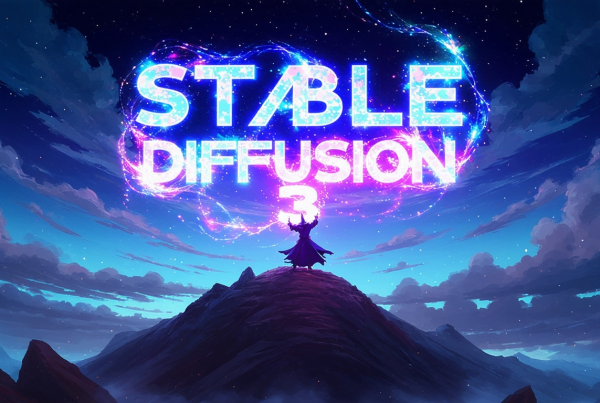
Stability AI has unveiled Stable Diffusion 3, a state-of-the-art text-to-image model that is set to redefine the landscape of AI image generation. Building upon the successes of its predecessors, Stable Diffusion 3 incorporates cutting-edge techniques and architectures to deliver unparalleled performance and creative potential.
Key Features of Stable Diffusion 3
Stable Diffusion 3 boasts an impressive array of features that set it apart from other text-to-image models:
- Scalable Performance: With models ranging from 800 million to 8 billion parameters, Stable Diffusion 3 offers the flexibility to cater to a wide range of creative needs. The larger models deliver unprecedented levels of detail and quality, while the smaller models offer more efficient generation capabilities.
- Enhanced Language Understanding: Stable Diffusion 3 excels at understanding and executing complex, multi-subject prompts. By leveraging advanced natural language processing techniques, the model can generate images that accurately capture the nuances and relationships described in the text.
- Emphasis on Responsible AI: The team behind Stable Diffusion 3 has made safety and responsible AI a top priority. The model incorporates various safeguards, such as content filtering and user controls, to prevent misuse and ensure a positive user experience.
The Technology Behind Stable Diffusion 3
Stable Diffusion 3 is powered by a combination of cutting-edge techniques and architectures:
Diffusion Transformer Architecture (DiT)
The DiT architecture is a unique fusion of diffusion models and transformers. Diffusion models have shown remarkable success in generating high-quality images by iteratively denoising samples, while transformers have excelled at capturing long-range dependencies in data.
In the DiT architecture, the diffusion process is integrated into the self-attention mechanism of the transformers. This allows the model to effectively capture the complex relationships between text and images, resulting in more coherent and contextually relevant outputs.
Additionally, DiT employs techniques such as adaptive layer normalization (adaLN) and patchwise processing of images to further enhance training stability and model performance.
Flow Matching (FM)
Flow Matching is a novel framework for training Continuous Normalizing Flow (CNF) models. Traditional CNF training methods often involve computationally expensive simulations, which can hinder scalability and efficiency.
Flow Matching addresses these challenges by providing a simulation-free alternative. It relies on conditional probability paths and vector fields to model the flow of data through the latent space. By directly specifying the probability path and optimizing the vector fields, Flow Matching enables more precise control over the data generation process.
The Flow Matching framework has demonstrated state-of-the-art results on various image datasets, achieving superior performance in terms of sample quality, negative log-likelihood, and training efficiency.
The Synergy of DiT and FM in Stable Diffusion 3
The combination of the Diffusion Transformer architecture and Flow Matching in Stable Diffusion 3 yields remarkable results. The model is capable of generating images with exceptional detail, sharp textures, and a deep understanding of the input text prompts.
This synergy enables Stable Diffusion 3 to handle even the most challenging and elaborate prompts, such as “a photorealistic render of a futuristic city with towering skyscrapers, flying vehicles, and holographic advertisements, all illuminated by the neon glow of a vibrant sunset.”
The ability to generate such complex and diverse images opens up a world of possibilities for creative professionals, designers, and enthusiasts alike.
The Future of AI Image Generation
As Stable Diffusion 3 gears up for its official release, it is poised to revolutionize the field of AI image generation. With its cutting-edge technology, exceptional performance, and commitment to responsible AI, Stable Diffusion 3 sets a new standard for text-to-image models.
The potential applications of this powerful model are vast, spanning across various domains such as digital art, graphic design, gaming, and more. As researchers and developers continue to push the boundaries of what’s possible with AI image generation, models like Stable Diffusion 3 will play a crucial role in shaping the future of visual content creation.
If you’re eager to experience the capabilities of Stable Diffusion 3 firsthand, be sure to join the waitlist and prepare to embark on a journey of unparalleled creative exploration. With Stable Diffusion 3 at your disposal, the only limit is your imagination.

